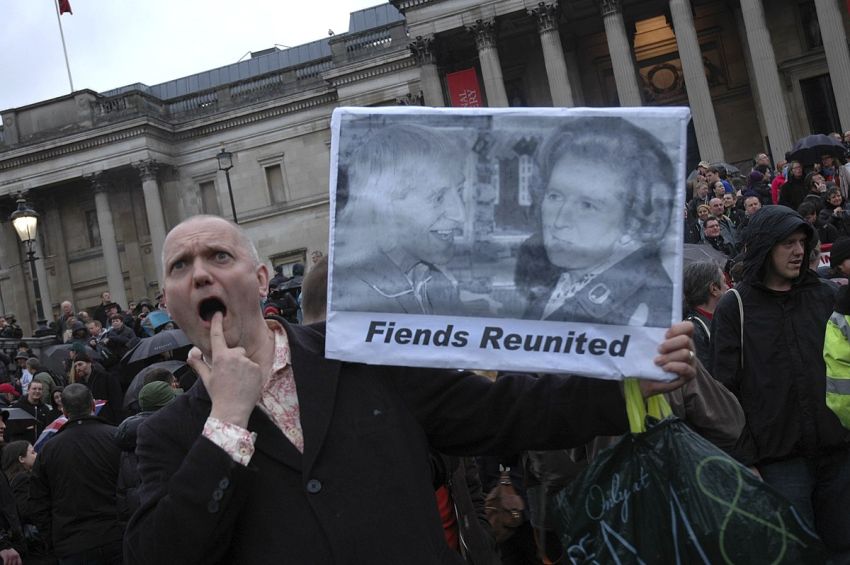
Jimmy Savile: A British Horror Story
Directed by Rowan Deacon, 2022
Now showing on Netflix.
British TV and radio personality Jimmy Savile was known to millions of people for hosting shows such as Top of the Pops and Jim’ll Fix It and raising millions for charity. With an eccentric appearance and personality, Savile charmed the public to such an extent that he was knighted in 1990. When he died in 2011, his funeral was broadcast on the British Broadcasting Corporation (BBC).
Savile was also a sexual predator, however, it was not until after his death that the full extent of his crimes came to light. In the end, he was the subject of 450 reports of rape and sexual assault between 1955 and 2009. Offences took place in more than 50 locations, including hospitals and on the set of Top of the Pops.
The Netflix documentary Jimmy Savile: A British Horror Story attempts to explain how Savile was able to get away with it.
Through extensive footage — of Savile’s TV career, his numerous charitable exploits, hobnobbing with royalty and conservative politicians, making kids’ dreams come true on Jim’ll Fix it and countless interviews — we see how he was able to hide his crimes in plain sight, groom and gaslight his victims and those around him.
As a result, those who were closest to Savile failed to see how abnormal his behaviour was. This enabled the abuse of hundreds of (mostly) women, on an industrial scale.
Importantly, we also see how Saville established relationships throughout the British establishment — including the BBC, the National Health Service (NHS) and the police — protecting him from any consequences for his crimes.
Savile’s usefulness to the British establishment is demonstrated in the close relationship he cultivated with the Conservative Party, especially former British Prime Minister Margaret Thatcher. Savile’s fundraising activities enabled him to pose as the great saviour of institutions such as the Stoke Mandeville Hospital spinal unit. As Britain’s main spinal injuries unit, it was under threat of government closure due to budget cuts, thanks to Thatcher’s neoliberal policies.
In 1988, Savile came to the rescue of the Thatcher government again. When the management board of Broadmoor psychiatric hospital was suspended, it was replaced by a taskforce headed by Savile. Savile had volunteered at the facility since the 1960s — which was not uncommon for celebrities — but now had free rein to carry out his abuses.
Savile’s appointment was rubber-stamped by junior health minister Edwina Currie, who wrote “’Attaboy!” in her diary on hearing about Savile’s plans for reform at the hospital. These included union-busting, as Savile alleged that inflated overtime payments was rife among the unionised workforce.
Currie later admitted that Savile was probably blackmailing staff who could blow the whistle on his abuses.
Savile was finally knighted by the Queen in 1990, following years of lobbying by Thatcher. Following his knighthood, he revealed to journalist Lynn Barber that he had had “a lively couple of years, with the tabloids sniffing about, asking around the corner shops — everything — thinking there must be something the authorities knew that they didn’t … And so, if nothing else, it was a gi-normous relief when I got the knighthood, because it got me off the hook”.
This is one of the many instances of Savile hiding in plain sight. Another was in a television interview in 1999 on Have I Got News for You, where he joked: “I’m feared in every girls’ school in the country.” Despite being interviewed by the Surrey Police in 2009 and numerous rumours circulating in his later life, Savile was never brought to justice for his crimes.
Following Savile’s death in 2011, 60 victims come forward with reports of abuse for a BBC investigative documentary. However, the story was covered up while the BBC ran a tribute to Savile. By the time ITV aired the expose in October 2012, that figure had grown to more than 450 victims, ranging in age from 5 to 75 years.
Savile’s crimes were enabled by the fact that his victims were among some of the most vulnerable people — especially young women and children — who were less likely to be believed.
Turning a blind eye to sexual abuse and assault occurs in all areas of life, across all sections of society, and across all classes. Since Savile’s death, these attitudes have started to change. In Britain, Operation Yewtree resulted in the arrest and conviction of celebrities such as Gary Glitter, Max Clifford and Rolf Harris. There has also been the emergence of the Hollywood #MeToo movement in the United States, as well as the convictions of Jeffrey Epstein and Ghislaine Maxwell and civil case against Prince Andrew.
Watching the testimony of one of Savile’s victims, Samantha Brown, is heartbreaking. The documentary should have included more of Savile’s victims (and earlier in the series), to add more weight to the horror of his crimes.
Despite its shortcomings, Jimmy Savile: A British Horror Story is a true horror story, showing how the British ruling class enabled this abuse to continue because of Savile’s usefulness to them.